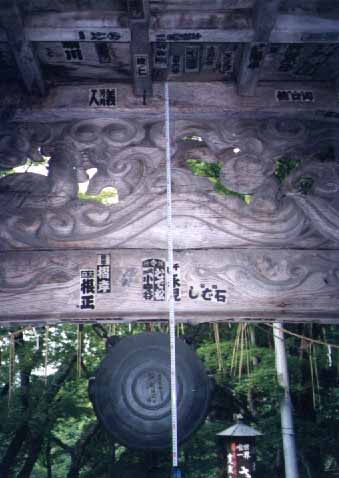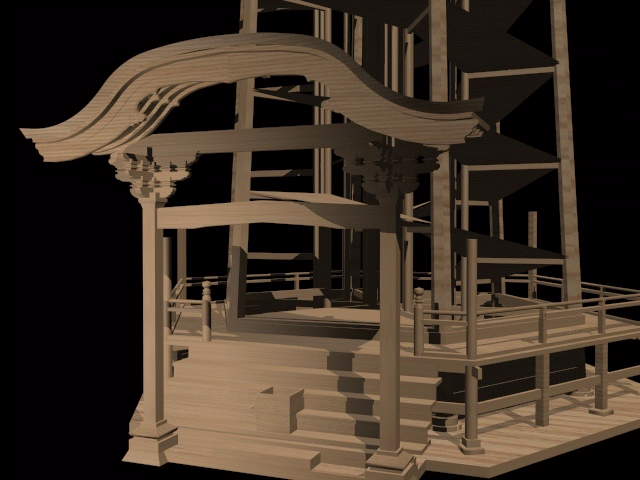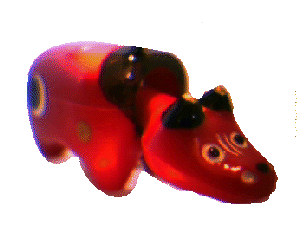
These dragons, at the entrance to Sazaedō,
were carved from a single piece of wood by Yamagishi
---, descendant of the miya daiku who built the original structure,
and ancestor of Yamagishi Seiji, our consultant miya daiku.
|
|
These dragons, at the entrance to Sazaedō, |
Where did the builder get the idea to construct the double-helix ramp? There was no exact precedent in Japan. The closest example was the pagoda at Rakanji in Edo, built around 1741. Also officially called Sansōdō and nicknamed Sazaedō, this pagoda featured a single spiral ramp that led to the top of the building, winding past one hundred images of Kannon. Pilgrims climbed the one-way ramp and exited via a stairway. The Aizu double helix design improved on this structure, since ascending or descending pilgrims could venerate the Kannon images--and throw coins into the alms- boxes conveniently placed before each image. The double-helix design relieved crowding, and it also must have made the pilgrimage a total religious experience with no letdown at the end.
Some years ago, Prof. Kobayashi Bunji of Nihon University proposed that the double helix idea was derived from European models, introduced to Japan in books imported from the West. Satake Shozan, the late eighteenth-century daimyo (lord) of Akita, copied a double-helical stairway in his notebooks, but there is no evidence that Kiuemon ever saw this sketch, and we know of no connections between Shozan and Aizu.
The temple flourished in the Edo period. When the Edo shogunate was overthrown and replaced by the Meiji government in 1868, both Buddhism and the Aizu region fell on hard times. State policy in the early Meiji period encouraged people to neglect and even attack Buddhist establishments, and Aizu itself was isolated, as the last domain that supported the collapsing Edo regime. Sazaedō fell into disrepair. At the end of the Meiji era, however, the pagoda was rebuilt, funded by donations collected from the populace.
For those interested, a print (in Japanese) of the written appeal for donations can be examined. Translation is temporarily unavailable)
Since then Sazaedō has attracted many pilgrims, sightseers, and architectural enthusiasts. Its recent designation as a National Important Cultural Property should guarantee that this unusual structure will be preserved.
 |
Return to Sazaedō's home page. |

|
Return to menu. |